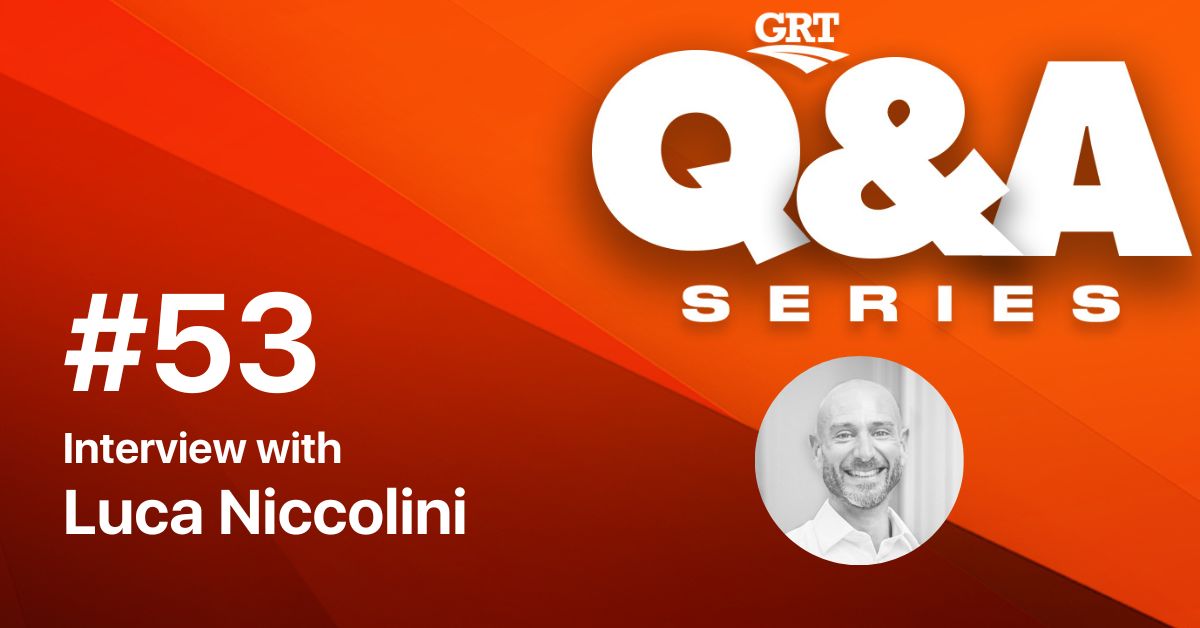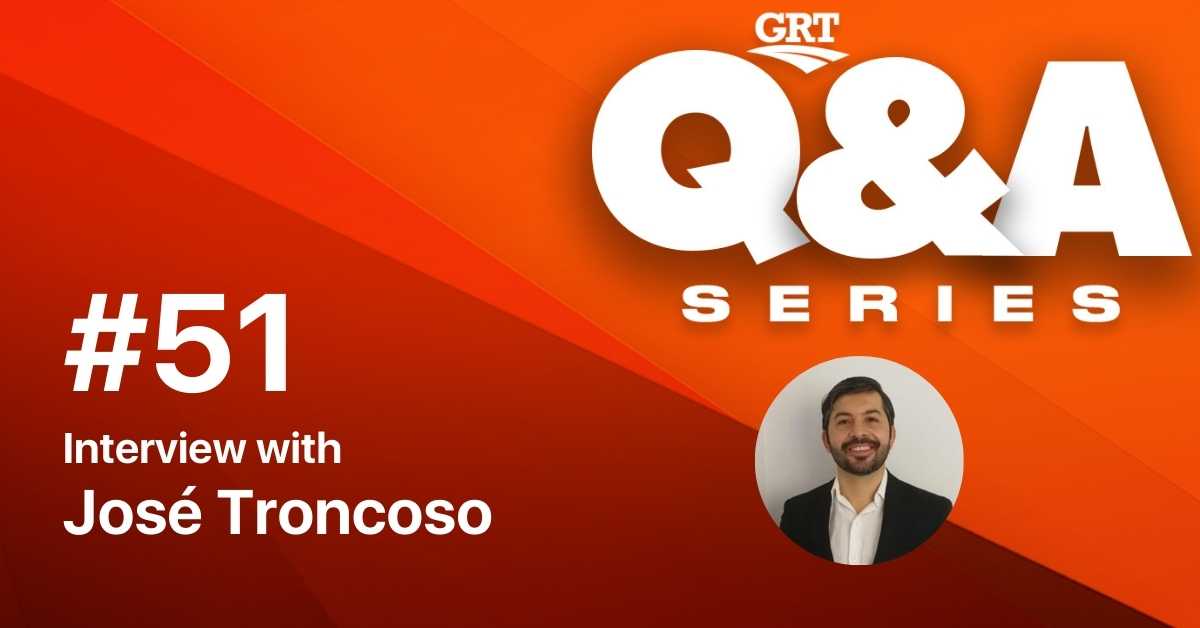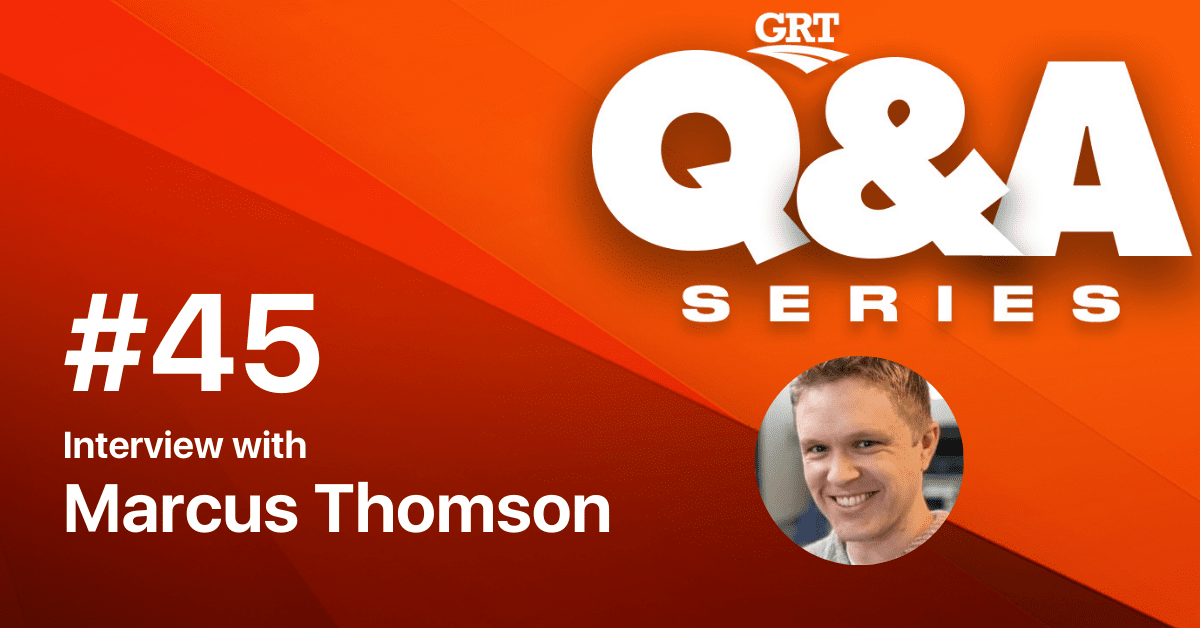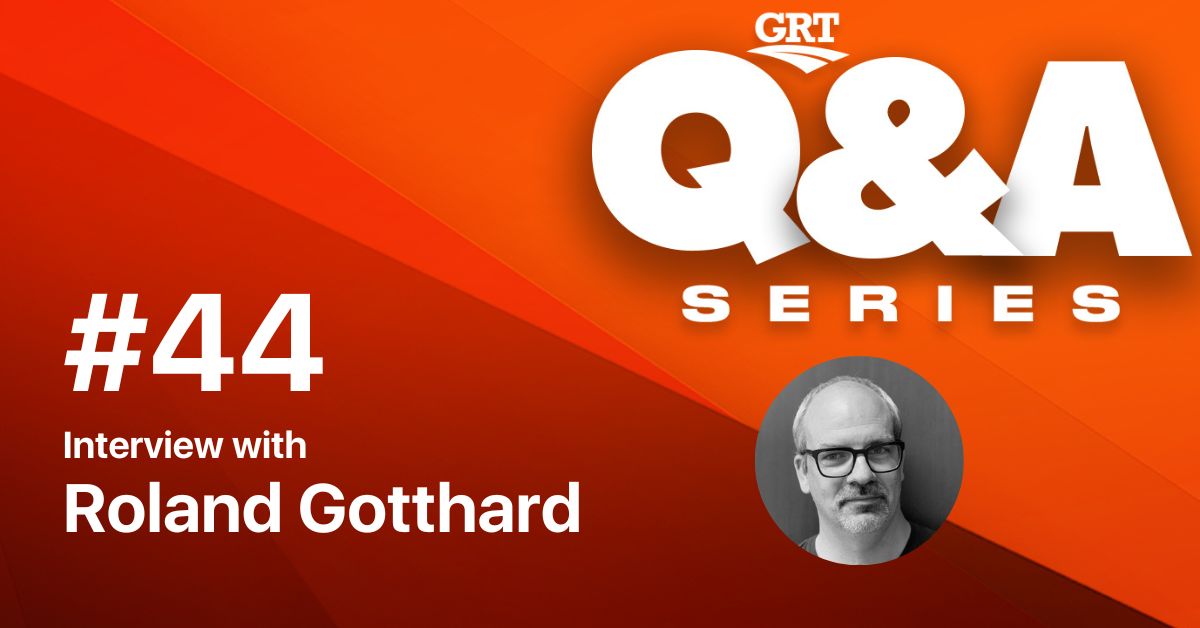GRT Q&A Series #52 : Interview with Scott Cummins
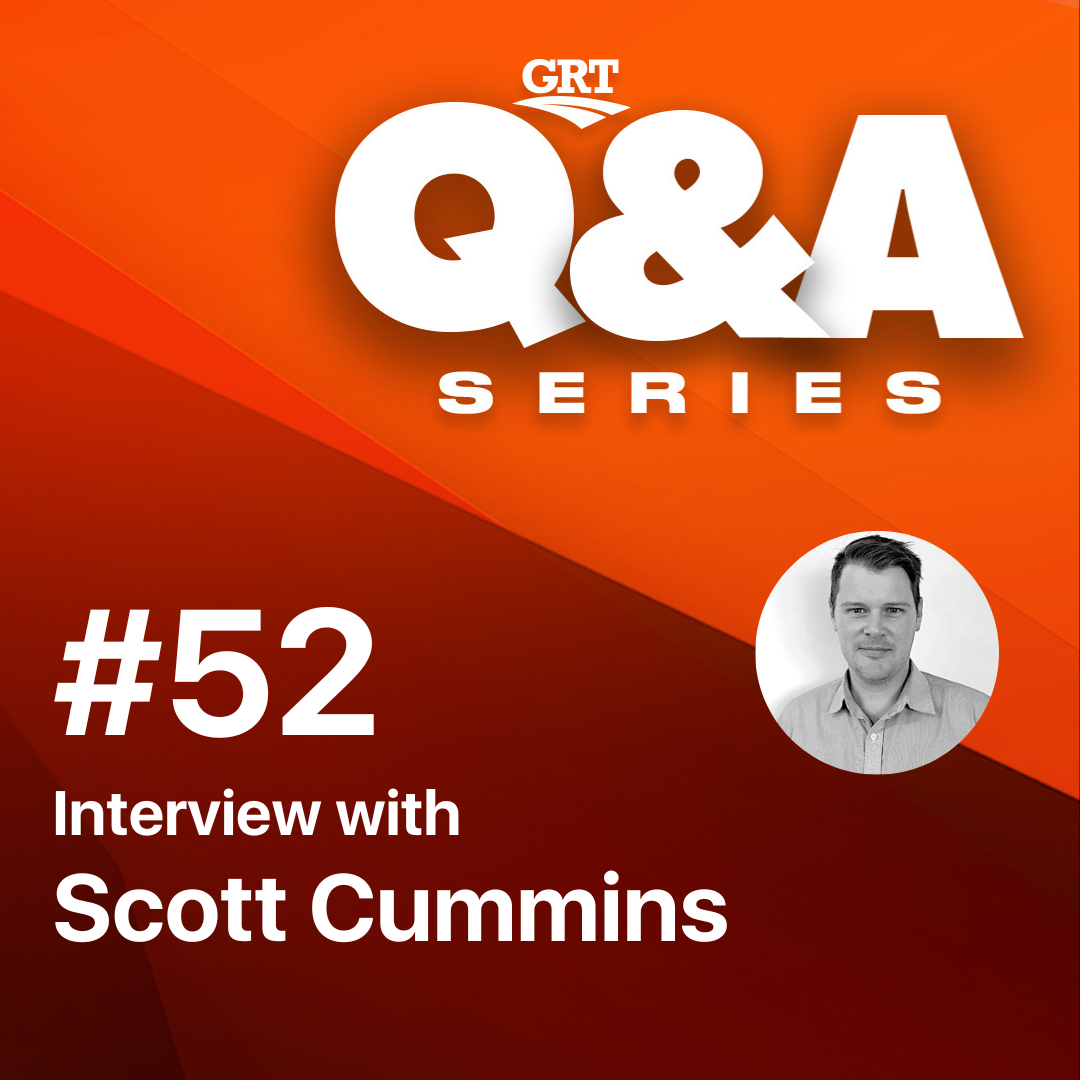
About the guest
Scott Cummins leads the Industry Mentoring Network in STEM (IMNIS) Engage program. IMNIS Engage is the Australian Academy of Technological Sciences and Engineering’s (ATSE) flagship industry engagement initiative that links STEM PhD students and postdoctoral fellows with senior level industry leaders in a one-year mentoring, professional development, and networking program. IMNIS creates genuine industry-academic engagement and deepens understanding of the value of collaborating and networking across sectors. IMNIS Engage helps enhance innovation to boost Australia’s productivity and prosperity, and comprises the REDI Connect, IMNIS Clinical and IMNIS International sub-programs. Scott was formally Board and Governance Partner – Public Sector, with the Australian Institute of Company Directors (AICD), working with new and existing c-suite clients and directors across the Australian public sector in the provision of gold standard governance solutions. Scott developed whole of organisation partnerships to meet individual client and board needs, including board effectiveness diagnostic tools, governance education, sponsorships, scholarships, and board consulting.
The Industry Mentoring Network in STEM (IMNIS) is a powerful opportunity for early career researchers to increase their understanding of industry and extend their professional network beyond academia.
In this one-year industry-led program, mentors and mentees meet in a professional setting each month and connect more broadly at IMNIS events. A series of professional development modules have been embedded into the program to develop professional skills and attributes to excel within any part of the STEM ecosystem.
Industry mentors are all volunteers donating their time and expertise. IMNIS provides a diverse range of industry professionals the opportunity to engage with academia, share their experiences, and pay it forward to the STEM community.
In this GRT Q&A Series, we speak about mentoring young professionals in STEM with Scott Cummins. He is IMNIS Engage Program Manager at the Australian Academy of Technology and Engineering. He is based in Orange, New South Wales, Australia.
Q1) A warm welcome to the GRT Q&A Series, Scott. It’s a pleasure to have you. Please tell us more about the Australian Academy of Technology and Engineering (ATSE)? What does your current role as IMNIS Program Manager entail?
Thanks for having me, Keith!
The Australian Academy of Technology and Engineering (ATSE) is a learned academy of almost 900 independent experts in applied science, technology, and engineering (Fellows) helping Australians understand and use technology to solve complex problems. ATSE’s President is Professor Hugh Bradlow FTSE and the secretariat is led by CEO, Kylie Walker.
The Academy’s Fellows work together with the professional Secretariat to provide expert advice to leaders and the public. This is also achieved through the delivery of programs and tools that nurture population literacy and career pathways in science, technology and engineering.
My role as IMNIS Engage Program Manager is to lead and manage all aspects of the delivery of IMNIS Engage and its sub-programs nationally and internationally including program related events, professional development, and networking activities. I work closely with our Director, STEM Careers Strategy, Dr Marguerite Evans-Galea AM, and a team of talented and driven professionals to ensure the program realises its full potential.
Q2) IMNIS stands for the Industry Mentoring Network in STEM (IMNIS). Can you please take us through what the flagship engagement initiative is all about?
The Industry Mentoring Network in STEM (IMNIS) Engage program was developed in 2014 by Professor Paul Wood AO FTSE, Ronnie Wood, and Dr Tony Radford AO FTSE in response to concerns about the gap in Australia between academia and industry.
Fast-forward to the present, IMNIS Engage is now an award-winning industry engagement initiative delivered by ATSE, which annually pairs motivated PhD students and early-career researchers (mentees) in STEM with influential industry leaders (mentors) in a one-year mentoring, networking, and professional development program. ATSE’s vision for this program is to grow a genuinely collaborative Australian approach to STEM research and development by creating a generation of PhD graduates who have the skills, networks, and confidence to work in or engage with industry.
IMNIS Engage has evolved into an inclusive ‘all of STEM’ model which enables and encourages participation across all science, technology, engineering and mathematics (STEM) disciplines. Since IMNIS began we have matched over 1,700 early-career researchers from more than 50 leading organisations around Australia with influential industry leaders. Our alumni data indicate that IMNIS positively shifts the culture and creates enduring professional connections throughout the STEM ecosystem.
Q3) How crucial is the industry-academic relationship in furthering STEM in Australia? What role do collaborations have in driving innovation from grassroot level to the very top?
Ensuring that academia and industry effectively bridge commercialisation’s ‘Valley of Death” by taking early-stage opportunities through to finished products is in the best interests of society and the economy. This is challenging due to the inherent differences between them but a program like IMNIS Engage which promotes collaboration and STEM career pathways in industry is helping to overcome these hurdles.
Academia is focused on research and discovery while industry is driven by commercial outcomes. IMNIS aims to highlight the common ground between these sectors. This being the fact that we all want to help people, benefit society, boost our health and economy and improve lives. There’s also a clear requirement within industry for consistent innovation and to build and maintain a workforce with the ability to keep up with and utilise advances in technology and this means there’s a requirement for research to be more closely connected with the needs of industry.
OECD data reflects that Australia needs to increase industry-academia engagement. Further data has shown that only a small percentage of PhD students indicate any significant levels of external engagement, and this is where IMNIS Engage aims to have an impact in bridging the divide between industry and academia.
The reality is that many PhD students in STEM disciplines don’t realise that the skills they learn through their PhD training are transferrable to many careers outside academia. Competency in areas like problem-solving, communication, creative thinking and analytical skills are all acknowledged as critical skills for emerging industries but what graduates often have limited exposure to are the needs, drivers, and operating mechanics of the non-academic environment and this is where a mentor can provide insight, expertise, and guidance to an emerging leader in STEM.
Q4) In fostering inter-generational workplaces it is important to grow mentorship within organisations and across the professional value chain. How do we harness such relationships to enhance innovation and boost the productivity of the Australian workforce?
Absolutely. As long as it’s personal and not bureaucratic or seen as an obligatory HR exercise.
Within the workplace, a supportive mentor can be a conduit between individual and organisational needs, and between extrinsic and intrinsic rewards. An effective mentoring program can lead to higher levels of job satisfaction and retention, as well as contributing to the professional development of the mentee. Interestingly, mentors themselves seem to gain just as much. With each mentee they learn something new and get to view the world through the lens of someone else’s experience.
Harnessing these relationships to enhance innovation and boost productivity in Australia requires a greater understanding from business leaders, researchers and research leaders of the benefits and outputs these relationships have the potential to generate. Mentoring can foster innovation through knowledge sharing and the exchange of information, skills, and expertise. This enables individuals to become more resourceful in solving problems and in turn, improves productivity.
There’s also a strong link between organisational mentoring and the development of a strong organisational culture. We know that a good organisational culture can align behaviours and enable employees to make decisions that are aligned with the strategy; and a strong mentoring program is a good means to sync employee’s individual purpose with that of the organisation. With a good organisational culture established, productivity and innovation can flourish.
Q5) You are well positioned to expand the reach and impact of the IMNIS initiative. How have you managed to work around challenges posed by COVID-19 over your tenure in this role? What lessons have you derived from the challenges?
The pandemic has presented challenges which are certainly not unique to us, and we’ve adapted to the best of our ability to deliver an effective program despite the circumstances.
Like most organisations overcoming these challenges, we’ve leveraged virtual opportunities to the best of our ability and most mentor/mentee interactions took place online. This has worked well but I’ve observed the preference for a return to face-to-face interactions. As is the trend for workplaces as we move out of the pandemic, I anticipate a hybrid approach to mentoring with a balance between in-person and virtual interactions.
Despite the challenges that the pandemic presented, it was important to ATSE that we build on the IMNIS Engage program’s momentum. and over the past year we have introduced sub-programs which offer additional professional development and networking opportunities to competitively selected mentees through:
– IMNIS REDI Connect – for mentees doing research in STEM fields with high job-growth potential such as digital health, gene and cell therapy, regenerative medicine, right through to areas like data science and bioinformatics.
– IMNIS International – for mentees who clearly demonstrate the desire to understand international trends and advances in applied science, technology, and engineering.
– IMNIS Clinical program – for mentees undertaking clinical or health-tech related research to better understand how medical protocols and products can be commercialised to facilitate translation of new technologies.
We’ve also introduced IMNIS Catalyst which is an ambassador program where IMNIS Engage alumni represent IMNIS and ATSE in the broader STEM ecosystem.
We will soon be launching our new industry internship program, IMNIS Ignite, which will connect industry-ready IMNIS Engage alumni with industry-based internships at host organisations.
Q6) Ideally, relationships with different stakeholders such as individuals, companies, research organisations, governments, funding bodies and universities are fostered from establishing working relationships. How have you driven the mandate of IMNIS in building these relationships?
All the stakeholders you have mentioned recognise the imperative to nurture greater levels of industry/academia collaboration in Australia and it’s this common recognition that has led to these productive strategic partnerships within IMNIS Engage.
IMNIS is powered by MTPConnect through their Researcher Exchange and Development in Industry (REDI) initiative. Industry leaders are attracted to IMNIS Engage as they gain insights into the future workforce. Mentors are often motivated by the opportunity to give back and the inherent satisfaction in helping people at the start of their careers.
Australia produces about 10,000 PhDs a year, with around 6000 coming from STEM disciplines.
There are simply not enough academic positions for every PhD graduate with less than 10% of graduates ending up in long-term academic roles. Universities acknowledge this and recognise the need for industry careers to be highlighted. IMNIS Engage also provides research organisations, through its mentors, the opportunity to demonstrate the importance, value, and satisfaction of industry research.
Ultimately, ATSE’s IMNIS initiative interacts with a variety of different stakeholders from both industry and academia but with a common interest in ensuring that PhD graduates can more effectively engage with industry and collaborate across multiple disciplines and professional sectors.
Q7) In closing, what would it take to be a mentee of the IMNIS Program? What can we expect from these mentees in the future after going through the IMNIS Program?
Ultimately, it is up to each participating organisation to select their PhD students and postdoctoral fellows to participate in the IMNIS Engage program, but we do provide guidance to assist their selection.
The key thing is mentees must be motivated to learn about and engage with industry and the broader STEM ecosystem. There also needs to be an understanding from the mentee that this is not a job placement program. They must be prepared to leverage the program to work with their mentor to understand how industry, academia and government work together, diversify their skills, discover new opportunities, and take another step towards reaching their full potential. A willingness to gain knowledge from lived experience that cannot be acquired in an academic setting is a must.
IMNIS Engage is an opportunity to broaden horizons beyond academia through industry mentoring, professional development, and building new networks.
Find out more about ATSE’s IMNIS Engage program: https://imnis.org.au/

Keith Nare
Technical Head of Communications for GRT, Keith leads GRT's content strategy across various platforms, whilst coordinating internally to build the voice and opinions of the GRT team. Keith is a product of Nelson Mandela University and his PhD work focuses on Polymer and Physical Chemistry. He was a Research Associate at SANRAL in South Africa and later spent time as a Visiting Research Associate to NTEC at the University of Nottingham in the UK. He is a former Director of Communications for CALROBO in the USA.
Keith is passionate and enthusiastic about health and safety, sustainability, networking and finding synergy through conversations.
Troy Adams
Troy Adams is the Managing Director of Global Road Technology (GRT) Specialising in Engineered Solutions for Dust Suppression, Erosion Control, Soil Stabilisation and Water Management. A pioneering, socially conscious Australian entrepreneur, Troy Adams is passionate about health and safety and providing innovative solutions that are cost-effective to the mining industry, governments and infrastructure sectors. Troy is also a tech investor, director of companies like Crossware, Boost, Hakkasan, Novikov and more.
